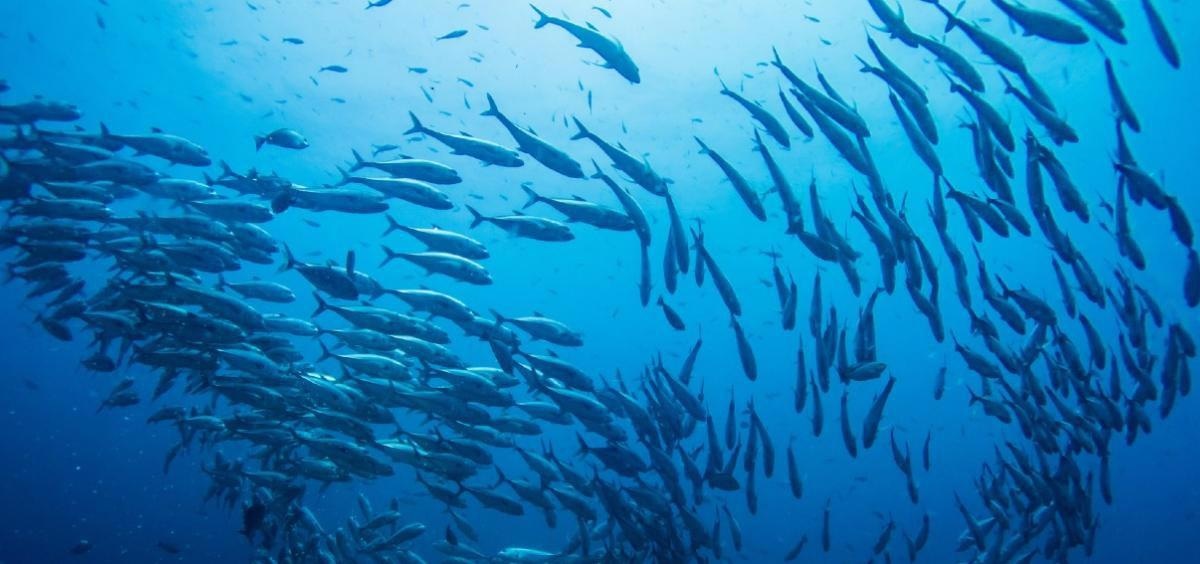Reviewed by Alex SmithAug 13 2021
According to a new study by researchers from Oregon State University, the herds of wildebeest, schools of herrings and various other groups of organisms that live in concert are not just visually amazing but capable of supporting complex ecosystems to maintain diversity and stability.
 Blue rockfish. Image Credit: Oregon State University.
Blue rockfish. Image Credit: Oregon State University.
The study explains that when individuals come together to consume resources as a collective group, the surrounding ecosystem gains more resilience and can support a wider variety of species. The study has been published in the journal Nature Ecology and Evolution.
The results could be key progress towards learning the process by which living systems exist on an even keel, where the collective behavior is omnipresent on the planet, which has a key role in everything, ranging from bacterial biofilms to human cities.
These collectives show highly organized, large-scale patterns in behavior that emerge spontaneously from localized interactions among nearby individuals. Our question was, what is the significance of collective behavior in ecosystems?
Ben Dalziel, College of Science, Oregon State University
Dalziel and the team observed the presence of emergent social-ecological feedback between the structure and size of the collective groups and the resource level in an ecosystem. This feedback defended the system against crashing. The feedback reduced the fluctuations in the abundance of resources and permitted additional consumer species to thrive using the same resource, rather than the stronger competitors pushing the weaker ones into extinction.
Dalziel, who is a population biologist, directed a collaboration that assessed the ecological importance of collective behavior from the view of two enduring ecological puzzles — the paradox of the plankton and the paradox of enrichment.
The paradox of enrichment is observed when there is an increase in the availability of food for the prey due to unsustainably huge growth and destabilization of the predator population. This is observed in a predator-prey model.
The paradox of plankton denotes diverse ecological communities, like various kinds of phytoplankton, which thrive even when many other similar species are competing for limited resources.
It is not a given that complex ecosystems will be stable—if you just throw a bunch of species together in an environment, theory tells us the result will likely be ecosystem collapse. That means real ecosystems must have some kind of special sauce that allows them to persist with a diverse array of species.
Ben Dalziel, College of Science, Oregon State University
According to the researchers, the collective behavior observed among plants, animals, microorganisms and people could be a strong ingredient of the sauce.
Dalziel and Mark Novak of the College of Science, James Watson of the Oregon State College of Earth, Ocean, and Atmospheric Sciences, and Stephen Ellner of Cornell University began with a standard model of a simple food web — two generic “consumers” that feed on a shared resource.
A series of equations demonstrate the multiple variables of the model, like per-capita resource consumption and consumer mortality rate. However, in the current model, the consumers vary only in the efficiency with which the resources are captured.
Dalziel stated, “We constructed simulations in such a way that we could turn collective behavior on and off without changing anything else in the system. What we found was that adding collective behavior was a game changer in the simulations — it stabilized ecosystems that ecological and evolutionary theory clearly say should not otherwise be stable.”
The researcher explained it is a piece of the knowledge puzzle that had been missing. A lot of work had been dedicated to learning how the local individual behavior increases to impact the group-level behavior. The team also studied the way those groups process information but did not find much about the reason for collective behavior happening in the first place.
Dalziel refers to the results as a “good news story” that contradicts the negative role played by the collective dynamics.
Amidst the challenges we face with the spread of misinformation online, which also involves collective dynamics, here is an example where collective behavior plays a fundamental role in supporting life. And I also think it’s neat that such an aesthetically striking aspect of ecosystems—the flocks of birds etc.—could also play an important role in their stability and diversity.
Ben Dalziel, College of Science, Oregon State University
The research was supported by The National Science Foundation, DARPA, the National Institutes of Health, and NASA.
Journal Reference:
Dalziel, B. D., et al. (2021) Collective behaviour can stabilize ecosystems. Nature Ecology & Evolution. doi.org/10.1038/s41559-021-01517-w.